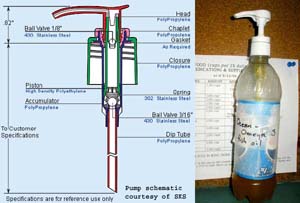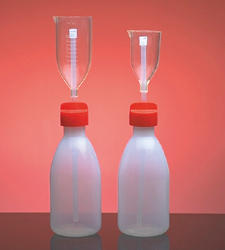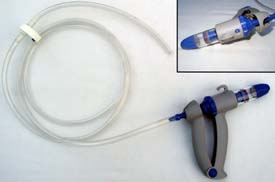In This Issue....
Featured Inuit Dog Owner: Sandy Hagan
Inuit Dog Thesis 15th Anniversary Edition
Product Review: Delivering the Goods
IMHO: A Few Thoughts about the Final Report on the Dog Slaughters
Navigating
This Site
Index of articles by subject
Index
of back issues by volume number
Search The
Fan Hitch
Articles
to download and print
Ordering
Ken MacRury's Thesis
Our
comprehensive list of resources
Talk
to The
Fan Hitch
The Fan
Hitch home page
ISDI
home page
Editor's/Publisher's Statement
Editor: Sue Hamilton
Webmaster: Mark Hamilton
The Fan Hitch welcomes your letters, stories, comments and suggestions. The editorial staff reserves the right to edit submissions used for publication.
Contents of The Fan Hitch are protected by international copyright laws. No photo, drawing or text may be reproduced in any form without written consent. Webmasters please note: written consent is necessary before linking this site to yours! Please forward requests to Sue Hamilton, 55 Town Line Rd., Harwinton, Connecticut 06791, USA or mail@thefanhitch.org.
This site is dedicated to the Inuit Dog as well as related Inuit culture and traditions. It is also home to The Fan Hitch, Journal of the Inuit Sled Dog.
Delivering the Goods
by Sue Hamilton
There are a variety of liquids, from nutritional and calorie-boosting supplements to parasite treatments, which may be routinely administered to dogs by way of inclusion in their meals. This product review is not about what additives to use or how to use them. Instead, it is intended to introduce you to different means of dispensing liquids.
The use of measuring spoons or cups, the "ancient" eyedropper method, or "eyeballing" a dose à la Julia Child adding wine to a recipe just doesn't cut it any more. These methods are too tedious or inaccurate. The materials and methods discussed here are by no means a complete selection of all delivery systems, but represent styles that may be found useful and convenient based on volume, the number of repetitions needed per session, portability, need for accuracy and other factors unique to users' set-up for feeding.
If you feed your dogs out of separate bowls and individually supplement with dietary oils, a proportioning pump may be the way to go. These are the pumps commonly seen on bottles of hand soap or lotion. Proportioning pumps are manufactured to deliver liquids of different viscosities (thickness), from thin as water to thick as some greases. They come in different sizes to deliver various volumes but it may not be easy to find one that delivers exactly your desired dose. And it might not be easy to "guestimate" a partial depression of the pump. Depending on the viscosity of the material being pumped and how consistent you are in the act of pumping, the quality of the pump itself and its compatibility with the liquid with which it is in contact, there may be inconsistency in amounts dispensed with each depression of the pump. However, this may not be a critical issue depending on what you are delivering. A pump may be suitable delivering a nutritional supplement but certainly not a powerful paraciticide such as ivermectin.

SKS’s pump anatomy (l) and in use (r).
Pump schematic:
SKS
We currently have eleven bowls lined out on the counter in our dog pantry. And it's considerably more than an arm's length from the first bowl to the last. The SKS model #2585-22 lotion pump1 we're using is manufactured with materials compatible for contact with oils (very important) and delivers 3.8 mls per full depression. Two strokes of the pump are close enough to the volume of omega 3 fish oil we choose to give. What's really neat is that the pump fits perfectly onto a 24 ounce (0.71 liter) plastic soda bottle. Even full of oil, the bottle is lightweight, easy to hold and won't shatter. Dispensing does take two hands because the bottle is soft plastic and if accidentally squeezed too hard, oil will drip out. But even using both hands, zipping quickly down a line of dog bowls dispensing oil is still easier and much faster than bringing all those bowls to a gallon (3.8 liter) jug sitting at one end of the counter, especially when the dogs can hear the bowls clanking as they are being handled and start screaming until feeding time and you're in a big hurry to get them quieted down. Also, the gallon container, especially when full, is too unwieldy to carry to each bowl to pump. Furthermore gallon containers generally use bigger pumps (one full ounce/29.6 ml) which might not be the volume you want.

Dispensing cup atop the bottle on the
left measures
up to 50 mls in 5 ml increments, on the
right,
25
mls.
Photo:
Dynalab Corp.
Another simple, one-handed measuring device is Dynalab's Adjustable Volume Dispensing Bottle2. Although the preferred model was not available in time to test for this review (#635-0000: the 1000 ml bottle with the 5 ml - 50 ml dispensing top will not be in stock until January, 2007), I am familiar with its use from my working days. The amount to be dispensed is adjustable by leveling the desired volume line etched into the cup with the tube inside the cup. Squeeze the bottle until the liquid exceeds the desired volume, then release. The excess gets sucked back into the bottle. Then pour. That's it!
A long section of Tygon®
tubing allows
Prima Tech's delivery
system to reach from one end of the
counter to the other,
drawing
canola oil from the 35 pound
container
Photo:
Hamilton
Here's another ingenious solution to the repetitive dispensing of liquids. Ranchers and farmers who have to deal with large numbers of animals in herds and flocks for vaccinating and "drenching" (administering liquid medications by mouth) use devices that work like pumps but are held like guns and draw their contents out of bulk containers. One such device is Prima Tech U.S.A.s 12.5 ml adjustable dose delivery system3. Since many vaccines for farm animals have a mineral oil component, the device is designed to withstand contact with similar bases to deliver viscous fluids. The sturdy Tygon® tubing is slipped through the cap of a container of any size and, depending on the length of the tubing, can reach "a far piece" - any length you want as the tubing is generally available from hardware stores to be custom cut. And this model can be adjusted to deliver repetitive volumes from 0.5 to 12.5 ml, in 0.5 ml increments, per one handed squeeze by dialing the desired amount on the handle.

Long Tygon ®
tubing attaches to the top of the white cap and
a shorter piece extends to the bottom of
the container
from which
fluid is drawn. (inset) The white number
in the blue
circle is the
dialed in volume, set to 5
mls.
Photo:
Hamilton
With a margin of error of 4%, it would not be accurate enough for worming medicines, especially set to the smaller volumes, but it sure is handy for custom dispensing different volumes of nutritional supplements especially those that are bulk packaged. We can now buy canola oil in a money saving 35lbs (15.8kg) container and dispense directly from it with ease! Prima Tech's device comes apart for easy cleaning.
There is no needle involved in
withdrawing an accurate
amount of
heartworm medicine using this
system
Photo: Hamilton
The use of ivermectin for the prevention of canine heartworm disease and the treatment of intestinal parasites, is another crossover drug from the large animal world, now approved to treat dogs and other companion animals. Some ivermectin heartworm prevention is manufactured specifically for dogs as chewable tablets of varying dosages according to an animal's weight range. But there are liquid forms of ivermectin and several different "recipes" available which are also successfully and safely used (with certain breed exceptions). These are far less expensive than what is generally used by pet dog owners. However, ivermectin is a powerful drug and requires careful measuring. For example, there is one dose per bodyweight to prevent heartworm disease and yet another to rid dogs of intestinal parasites. Different owners use different protocols. We are fortunate to have a fairly accurate platform freight scale in a location with easy access for the dogs - they don't have to be brought into the house. What we do here is weigh every dog every month on "heartworm day". So in addition to monitoring the dogs' weights for general health, we can calculate an accurate dose of our formula of liquid ivermectin diluted in propylene glycol (please note that the diluent is propylene glycol and NOT the poisonous ethylene glycol). To dispense heartworm preventative, we have a very nifty, yet simple and accurate delivery system made by Baxa, a medical device company offering fluid handling and delivery systems, and distributed by Health Care Logistics4. There are exactly two components to this device: the Adapta-Cap™ Bottle Adapter which replaces the cap that goes on an amber or green light blocking glass or plastic bottle, the kind you might get from a pharmacy, and a special needle-less dosing syringe whose hub fits tightly into the opening in this cap. Just choose the right size syringe. For ivermectin administration as heartworm preventative to dogs of our size range, a 3.0 ml syringe is ideal. Insert the syringe into the opening in the cap, turn the bottle upside down and draw out your calculated dose, being careful to expel any air bubbles back into the bottle. What this delivery system lacks in the speed of a pump or vaccinator/drencher, it makes up in accuracy. Excluding the flip top cap, this system has only two moving parts - the syringe barrel and the syringe plunger. It is easy to take apart and rinse out between uses, and so far looks like it will last far longer than the many years we've used it already. The syringe is special in that the measuring lines don't wear off and the tip will not accept a needle so can't be "abused". There are different size caps available to fit various size bottles and the syringes range in size from 0.5 cc all the way up to 35 cc. They can be seen at the Health Care Logistics web site by typing key words "adapter cap" or "plastic oral dispensers".
Note: units of measure have been expressed as described by the manufacturers or by common usage. Here are some equivalents:
The metric liquid volume measurement milliliter (ml) is the same as cubic centimeter (cc).
1 tsp = 5 ml
1 oz = 29.6 ml
1 qt = 946 ml
1 Proportioning Pump
#2585-22 $28.08/bag of 24
SKS Bottle & Packaging, Inc.
2600 7th Avenue, Building 60 West
Watervliet, NY 12189
518-880-6980 phone
518-880-6990 fax
email: custserv@sks-bottle.com
http://www.sks-bottle.com
2 Adjustable volume
dispensing bottle
#635-0000; 1000 ml bottle with 5-50 ml dispenser top
$17.50 each
Dynalab Corp.
350 Commerce Drive
Rochester, NY 14623
1-800-828-6595 phone
1-585-334-0241 fax
email: labinfo@dyna-labware.com
http://www.dynalabcorp.com/
search: "635-0000"
3 Adjustable dose
drenching gun (identified
as "12.5 ml injector")
#214102; suggested retail price: $32.50
Prima Tech USA
P.O. Box 336 Kenansville, NC 28349
910-296-6116 phone
910-296-0306 fax
email: dnichols@primatechusa.com
http://www.primatechusa.com/
4 Adapter cap and
plastic oral dispensers
Various size caps all at $15.60 for a pack of 20;
Plastic oral dispensers are $16.30 for a pack of
fifty 3.0 cc
syringes, for example
Health Care Logistics
PO Box 25, Circleville, OH 43113-0025
Phone: 800 848 1633
Fax: 800 447 2923
e-mail: HCL@HealthCareLogistics.com
http://hcl-intl.com/